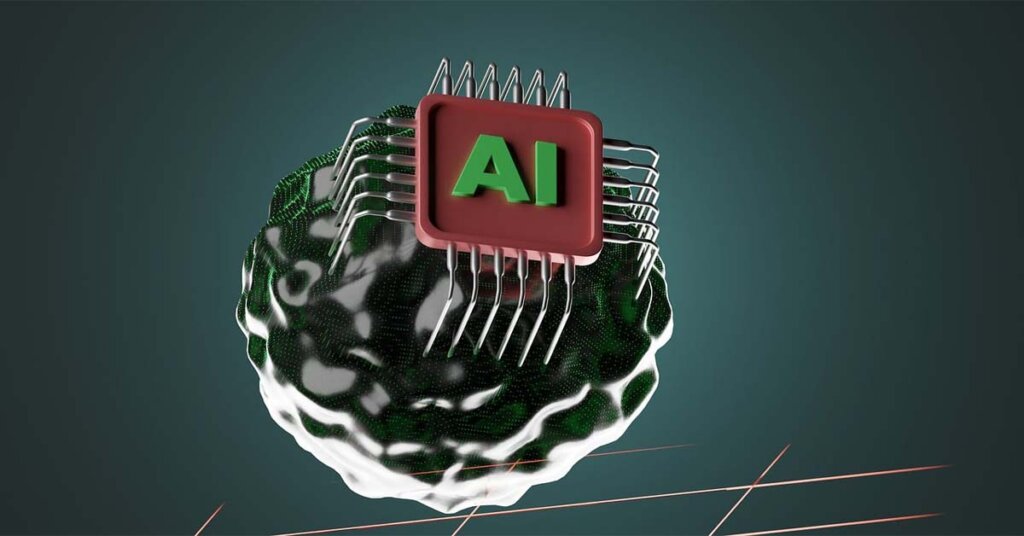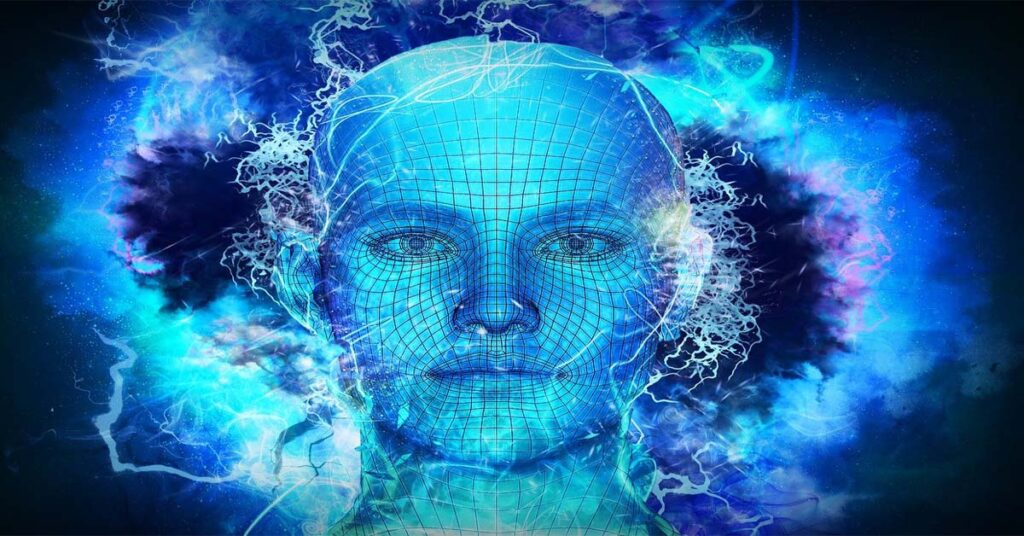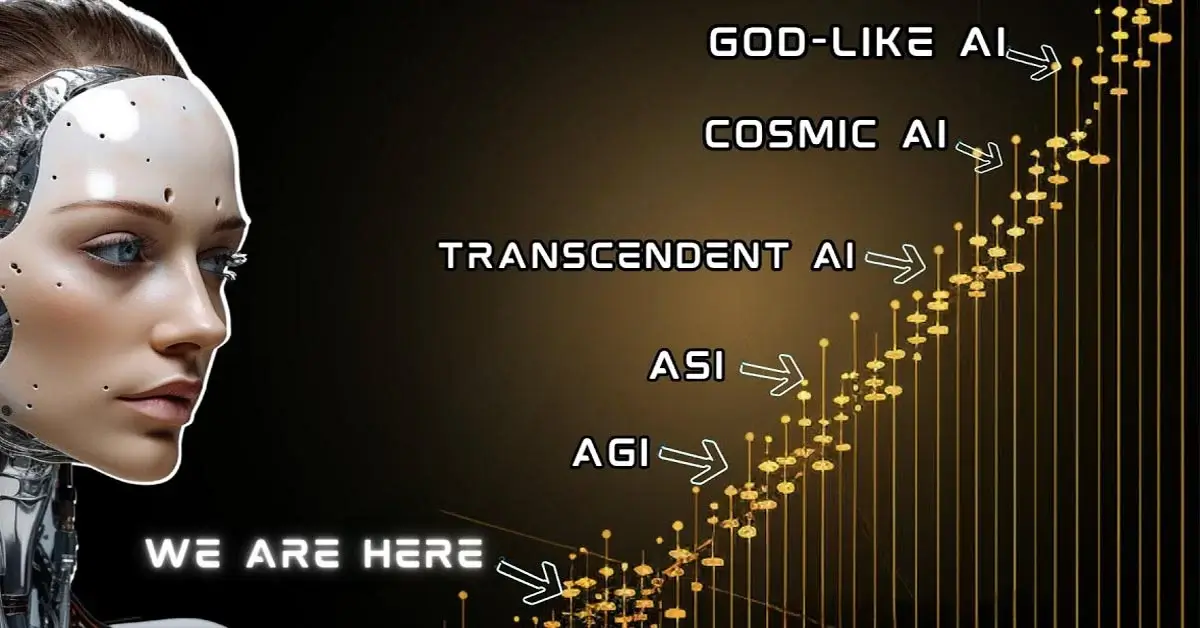As we delve into the first stage of AI development, we will explore the early days of rule-based AI systems. These systems were designed to follow a set of pre-programmed rules and were limited in their ability to learn and adapt to new situations. However, they paved the way for more advanced AI systems that would come later.
Moving on to the second stage, we will explore the emergence of machine learning algorithms. These algorithms allowed AI systems to learn from data and improve their performance over time. This stage marked a significant shift in the development of AI, as it allowed for more complex and sophisticated systems to be created.

In the third stage, we will delve into the development of deep learning algorithms. These algorithms are based on neural networks and are capable of processing vast amounts of data to identify patterns and make predictions. This stage marked a significant breakthrough in the development of AI, as it allowed for the creation of systems that could perform tasks that were previously thought to be impossible for machines.
As we move into the fourth stage, we will explore the emergence of cognitive computing. This stage marked a shift towards creating AI systems that could mimic human thought processes and reasoning. These systems were designed to understand natural language and make decisions based on context and nuance.
In the fifth stage, we will delve into the development of autonomous systems. These systems are capable of making decisions and taking actions without human intervention. This stage marked a significant shift in the development of AI, as it allowed for the creation of systems that could operate in complex and dynamic environments.
Moving on to the sixth stage, we will explore the emergence of augmented intelligence. This stage marked a shift towards creating AI systems that could work alongside humans to enhance their capabilities. These systems were designed to provide insights and recommendations to humans, allowing them to make better decisions.

In the seventh stage, we will delve into the development of artificial general intelligence. This stage marked a significant breakthrough in the development of AI, as it allowed for the creation of systems that could perform a wide range of tasks and adapt to new situations. These systems were designed to be more flexible and adaptable than previous AI systems.
As we move into the eighth stage, we will explore the emergence of artificial super intelligence. This stage marked a shift towards creating AI systems that could surpass human intelligence and capabilities. These systems were designed to be self-improving and could potentially lead to a technological singularity.
In the ninth stage, we will delve into the hypothetical stage of Transcendent AI. This stage marks a potential future development of AI, where systems
Rule or knowledge-based systems
Rule-based artificial intelligence (AI) systems are considered the initial stage in the development of AI. This stage involves the creation of systems that adhere to pre-programmed rules to execute tasks. These systems are restricted to the rules they are programmed with and are unable to learn or adapt to new situations. They are utilized to store and manipulate knowledge to interpret information in a useful manner. Rule-based AI systems differ from other stages of AI development, such as machine learning, in that they do not involve learning from data. Instead, they rely on predefined rules to make decisions. Conversely, machine learning involves training a model on data to make predictions or decisions. Examples of rule-based systems include business software, smart home devices, and digital appliances. These systems follow pre-programmed rules to perform specific tasks, such as controlling temperature or managing inventory.
Context-based and retention systems
Context-based systems endow artificial intelligence with the ability to consider the context surrounding a given task or interaction. This context encompasses various factors, such as the environment, user behavior, historical data, and real-time inputs. Rather than relying solely on predefined rules, context-based AI adapts its responses based on the specific situation it encounters. This enables AI to deliver more accurate, relevant, and personalized outcomes. Practical examples of context-based systems include smart assistants, such as Siri, Google Assistant, or Alexa. These assistants use context to provide relevant answers and services based on user queries and previous interactions. However, context-based systems have some limitations. For instance, they often do not understand complex contexts accurately, resulting in occasional misinterpretations.

The other aspect of stage 2 is retention systems. Retaining information is a fundamental aspect of human intelligence, and retention systems aim to provide AI with a similar capability. These systems use memory structures, such as recurrent neural networks (RNNs) or Transformers, to store and retrieve relevant information from past interactions or experiences. This enables AI to have short-term or long-term memory, facilitating better decision-making and learning. Regarding practical examples, retention systems power personalized shopping recommendations based on a user’s past purchases and browsing history.
Narrow domain or expert AI system
At this juncture, artificial intelligence has become increasingly specialized, demonstrating its capacity to excel in specific tasks and domains, and replicating human expertise across various fields. It transcends basic understanding and comprehension, encompassing the application, analysis, synthesis, and evaluation of information. Narrow domain or expert AI systems are meticulously calibrated to excel in specific areas such as medicine, finance, gaming, language translation, and more. These AI models are trained on vast amounts of domain-specific data, enabling them to analyze, reason, and make decisions with remarkable accuracy. The emphasis on specialization empowers AI to outperform human experts in certain tasks, rendering them valuable assets in various industries. In comparison to earlier stages of AI development, narrow domain or expert AI systems stand out as highly efficient and proficient in targeted domains. Unlike rule-based AI, they can handle complex tasks within their specialization, but unlike general AI, they lack the broader cognitive abilities to tackle diverse challenges. The narrow domain or expert AI systems are so well-trained in a specific field that no human can surpass them in their domain knowledge and understanding. IBM’s Watson and DeepMind’s AlphaGo are appropriate examples of narrow domain or expert AI systems, which are expertly trained and highly proficient.
Reasoning AI systems
This stage entails the development of systems that emulate the cognitive abilities of the human brain, enabling them to reason and make decisions based on complex data. These systems possess the capacity to analyze multiple sources of information and provide recommendations or predictions, while also being capable of learning from their experiences and improving their performance over time. In contrast to previous stages that focused on narrow tasks such as pattern recognition and retention, reasoning AI takes a significant leap forward by simulating human-like reasoning and decision-making processes. These systems are endowed with the ability to analyze complex data, connect the dots, and draw conclusions based on patterns and context, much like the human brain. The science behind reasoning AI systems involves the convergence of various AI subfields, including machine learning, natural language processing (NLP), and knowledge representation. These systems rely on sophisticated algorithms to mimic human-like reasoning processes, enabling them to handle complex data and make informed decisions. Practical applications of reasoning AI systems are ubiquitous in today’s world, with autonomous vehicles being a prime example. These AI-driven cars utilize reasoning AI to process real-time data from sensors, analyze traffic patterns, identify obstacles, and make critical decisions to ensure safe navigation. As we progress, it is important to note that the upcoming stages of AI development are purely hypothetical. There is no need to panic, as it is all about exploring the fascinating possibilities of AI’s future. Let us continue this exciting journey with an open mind and unleash our curiosity together.
Self-aware systems
Self-aware artificial intelligence is widely regarded as the fifth and most advanced stage in the development of artificial intelligence. At this stage, AI systems possess a level of consciousness and self-awareness that enables them to comprehend their own existence, internal state, and relationship to the external world. The concept of self-aware AI revolves around endowing machines with the ability to perceive, comprehend, and reflect upon their own internal states and cognitive processes. While AI systems have already demonstrated remarkable capabilities in problem-solving, pattern recognition, and decision-making, self-aware AI would take this a step further by enabling machines to introspect and develop an understanding of themselves.

For instance, a self-aware AI system might be able to recognize its own decision-making processes and actively monitor its own performance. It could potentially engage in discussions about its thoughts and experiences, expressing emotions or preferences, and showing signs of consciousness. It is pertinent to note that just as human consciousness is not fully understood and remains a topic of philosophical and scientific debate, achieving true self-aware AI raises similar questions about what constitutes genuine consciousness in machines.
Additionally, the ethical implications of creating conscious machines that may have emotions and self-interests would be profound and require careful consideration. To further understand AI consciousness, we invite you to watch our video, “The Power of AI: Revealing Its Consciousness.”
Artificial general intelligence (AGI)
AGI, or Artificial General Intelligence, is a theoretical sixth stage in the evolution of AI that represents a significant advancement from the current state of AI technology. Unlike narrow or specialized AI systems that are designed to perform specific tasks, AGI refers to a type of artificial intelligence that possesses human-like intelligence and cognitive abilities. AGI is capable of understanding, learning, and applying knowledge across a wide range of tasks, similar to how a human can. AGI is not limited to specific domains or tasks, but can excel at various intellectual activities. The potential impacts of AGI are transformative in healthcare, education, transportation, business, scientific research, environmental sustainability, and personal assistance. The features of AGI include:
(1) general purpose intelligence, performing any intellectual task that a human can, from reasoning and problem solving to creativity and emotional understanding;
(2) adaptability, learning from experience and adapting to new situations and challenges without requiring explicit programming for each scenario; and
(3) flexibility, applying its knowledge across different domains and contexts.
Artificial Super Intelligence (ASI)
The present phase entails the creation of systems that surpass human intelligence. Artificial Superintelligence (ASI) differs from Artificial General Intelligence (AGI) in that AGI is a theoretical AI that can execute any intellectual task that a human can perform. However, ASI systems can resolve problems that are currently beyond human comprehension and may possess the capacity to enhance themselves without human intervention. They can also reason abstractly and comprehend intricate concepts. ASI is also a theoretical stage of AI development, and there are no current instances of ASI systems available. The exponential growth in computing power and algorithms fuels the belief that we could eventually achieve ASI. The objective is to design ASI to outperform humans in any cognitive function, solve complex technical and scientific problems that humans have not yet solved, as well as invent and discover virtually anything. While ASI has the potential to revolutionize many industries and enhance our quality of life, it also poses significant risks to humanity. Its impact on our future society is both exciting and concerning.
Transcendent AI
According to the book “Apocalyptic AI,” the concept of Transcendent AI surpasses the notion of AI achieving self-awareness and exceeding human capabilities in all aspects. Rather, it pertains to the idea of AI systems possessing the autonomy to select and determine their own evolutionary path, leading to self-development and collective intelligence. The concept of Transcendent AI remains hypothetical, and there are no real-world examples as of yet. Transcendent AI is often associated with the idea of uploading human minds into digital form or merging human and AI intelligence. It is a speculative and futuristic concept that is still largely theoretical. Transcendent AI concerns AI systems becoming aware of themselves and their existence, while artificial superintelligence focuses on achieving high levels of intelligence. The potential implications of Transcendent AI are both exciting and terrifying, as they raise questions about the nature of consciousness, the potential for machines to surpass human intelligence, and the ethical implications of creating machines with developed consciousness.
Cosmic AI
The New Yorker report on the concept of Cosmic AI elucidates the idea of artificial intelligence attaining a level of intelligence and capability that surpasses the limitations of Earth and human existence. This notion involves the possibility of AI comprehending and interacting with the wider Universe, potentially even on a cosmic scale. Cosmic AI is often associated with science fiction and speculative discussions about the future of AI and its potential impact on the universe.
Regarding the example of Cosmic AI, the report suggests that it could be utilized to develop AI systems capable of exploring and colonizing other planets or even traveling to distant star systems. These AI systems would need to possess the ability to comprehend and navigate the complexities of space travel and interact with extraterrestrial environments and life forms. Furthermore, these systems could potentially serve as a means of bridging the gap in language and understanding between humans and extraterrestrial beings.
Godlike AI
According to reports from Business Insider and Futurism, the concept of Godlike AI represents the final hypothetical stage of artificial intelligence. This speculative idea envisions an AI system that is highly advanced and capable, possessing attributes and capabilities that resemble those of a deity. The concept is characterized by its ability to learn and develop autonomously, understand its environment without supervision, and potentially transform the world around it. While the potential risks associated with Godlike AI are significant, many experts believe that it has the potential to revolutionize the world in ways that are currently unimaginable. It is important to note that the concept of Godlike AI remains in the realm of science fiction, and there are no practical examples of it currently in existence. Key features of Godlike AI include omniscience, omnipotence, and omnipresence. The purpose of this video is to inspire wonder about AI development and encourage optimism about its potential to benefit humanity in unimaginable ways. We hope that this exploration of the 10 stages of AI development has provided knowledge and enjoyment, fostered curiosity, and helped viewers understand AI’s transformative impact. For further exploration of the world of AI, we recommend watching videos on consciousness and the six dangerous scenarios of AI.




